“I think the point of photography is to touch people. That’s why we love it – because we are touched.”
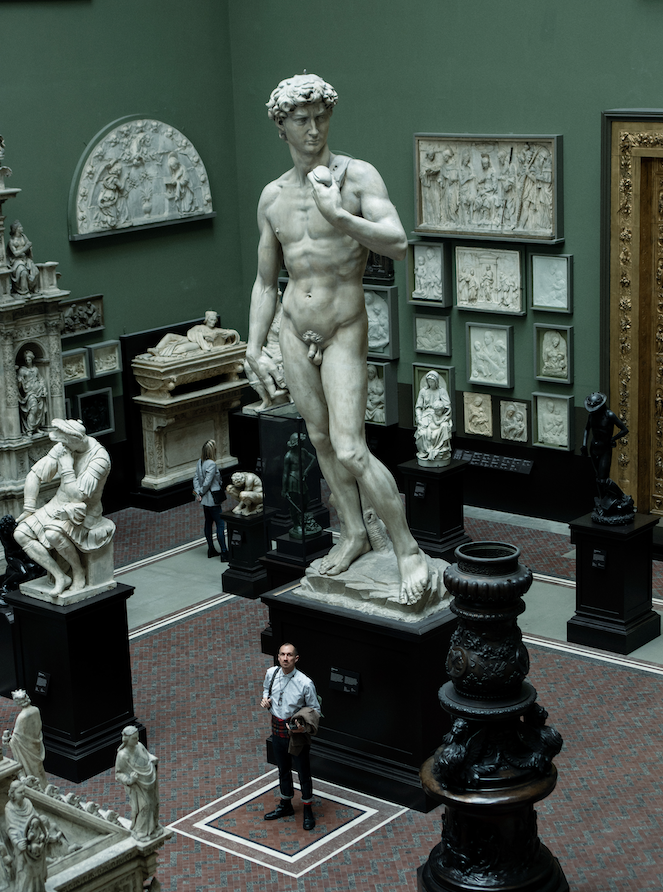
Tim Walker needs no introduction. Arguably the most iconic name in the world of contemporary fashion photography, the London-born visionary brings his creative genius to Rotterdam’s Kunsthal – and obvs, we had to be there. Taking us by the hand on the journey of his imagination, Walker narrates his eclectic vision throughout his career, from his very first works to the latest collaboration with the V&A.
Ambition and grandeur have permeated Walker’s works since day one – “I’d stop at nothing to drive my fantasies into a tiny 35mm canister – the more impossible the better”, the exhibition opens. Starting his career at the age of 18 working for Condé Nast with Cecil Beaton archives, Walker’s talent was quickly picked up, as by only 25 he had already snatched a Vogue cover and had been progressing his passion ever since. It’s hard to find a photographer with a portfolio as broad as his – any modern celebrity you can think of has most likely been captured through his lens. Of course, they all receive an á la Walker makeover – think Margot Robbie sliding down in an all-pink suit frying an egg or Grace Jones as a reincarnation of a 1670s skeleton figure. From Lord of the Flies to Hieronymus Bosch, Walker soaks up inspiration from literally anything and everything around him. “Like a doctor on call” Walker explains “you’re always alert to hearing, to reading, to seeing, to sensing”.
This appetite for absorbing his eclectic surroundings reflects in all his works, and a strong narrative is always the drive. Each photograph is a different world, a world built specifically for that moment in time to never be recreated again. Alongside Walker’s earlier works, the exhibition’s main event was a 10-piece jaw-dropping series of photographs taken in collaboration with the V&A. “It’s like falling in love with someone”, Walker describes his relationship with the objects he’d found in the collection that sparked the series. Preserving props, scenes and materials from Walker’s set, the exhibition is a deep dive into how his rich imagination takes on a physical form. One of our highlights was the muse Duckie Thot as a rebirth of Aubrey Beardsley’s illustrations Walker had found in the V&A. Beardsley’s 1894 works are based on the ancient Greek comedy Lysistrata – “a story of a woman’s attempt to end a war by persuading the women of rival city states to deny sex to all men until they negotiate peace.” Distorted silhouettes and exaggerated contrasts extend beyond what we know photography to be – venturing into the realm of graphics and layering centuries of fine arts.
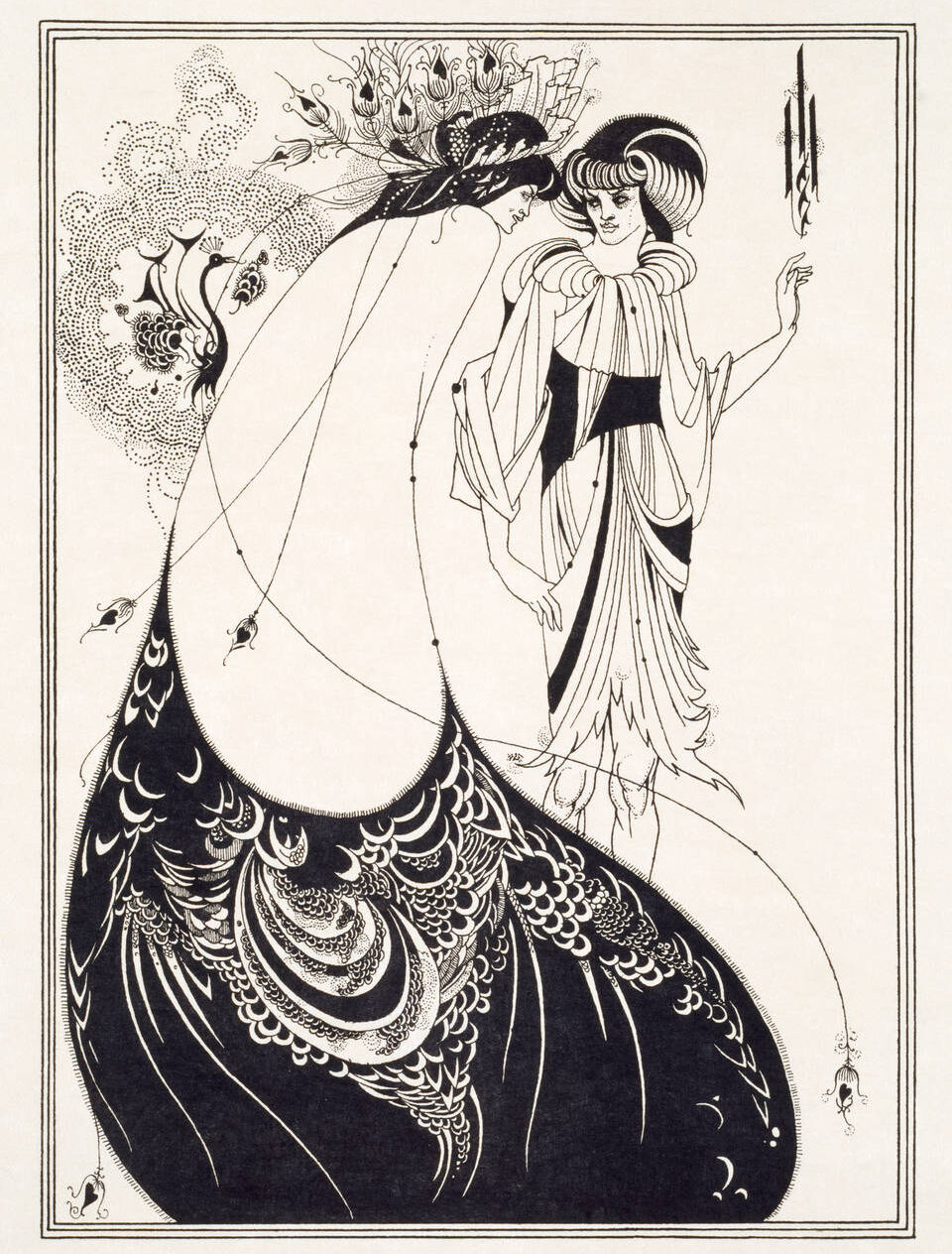
Aubrey Beardsley, ‘The Peacock Skirt’, 1894, Line block print on Japanese vellum paper (c) Victoria and Albert Museum, London
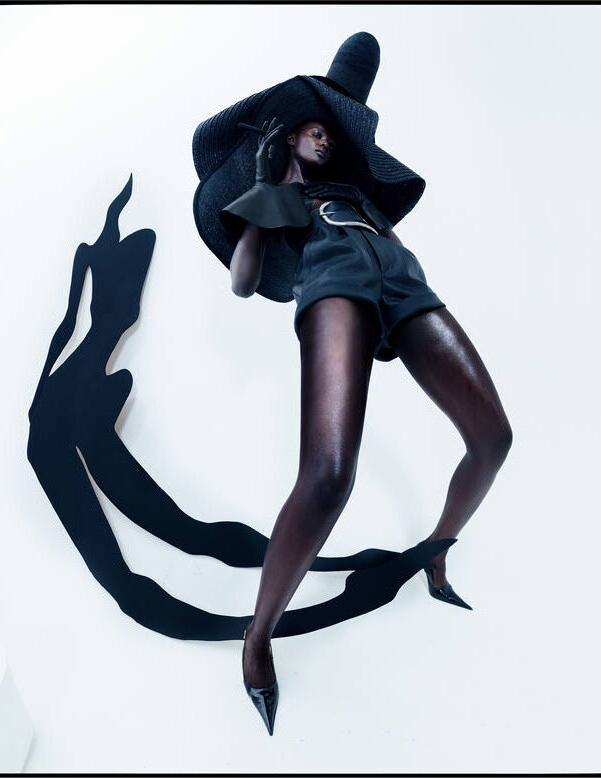
Tim Walker, ‘Duckie Thot, Aubrey’s shadow’, London, 2017 (c) Tim Walker Studio
Before the image makes it onto the glossy pages of high fashion magazines, and after the conception of an extravagant idea, lies a working approach not any less unique. Pre-production is key, of course, as the focus of his process is on creating the right atmosphere. “You always curate music in advance”, remarks the V&A curator, who was present on many of his shoots. “A silent dance between the artist and the subject” is the best way to describe the organic symbiosis Walker fosters with his models. Creating a safe space of connection between the camera and the subject, not many words are needed. “You really want people to be themselves,” states Walker, as he carefully tiptoes the space between direction and fluidity. It’s in the photographer’s body language, too – a slight tilt of the head and the subject follows. “The portrait is the handshake, the embrace, the agreement where we meet halfway along a collaborative path”, declares Walker, in a somewhat dreamy way.
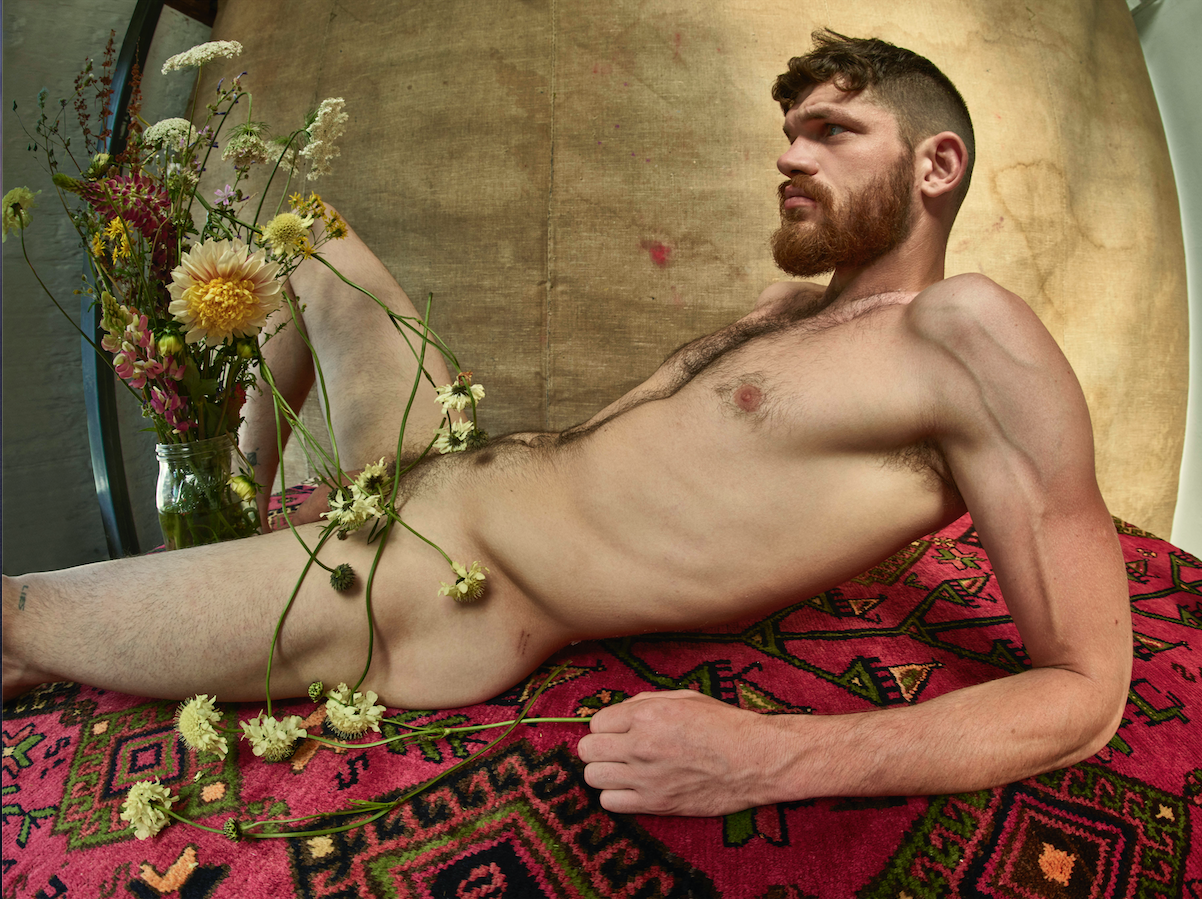
‘Charlie Taylor with wild flowers’, London, 2018
With the art of portraiture come muses, and the bewitching Tilda Swindon is definitely one of Walker’s. Making appearances throughout, we meet the culminating piece towards the end – Swinton dazzled in Edith Sitwell’s jewellery in celebration of weirdness and “being oneself”. Walker’s photographs are an intricate assembly of clues, citations and references, which all come together under careful preproduction, from styling to location and music Walker chooses to play on set. Swinton is a distant relative of the British poet, who she has always been fascinated by. Sitwell was also known for her extravagant, larger-than-life taste in jewellery – it was her rings that found home in the V&A and are at the centre of this series. Honouring the art of poetry, Sitwell’s emphasis on the importance of hands, and her love for the weird, it all morphs into one eclectic yet cohesive narrative. “It feels like we’re constantly walking with ghosts and references” Swinton refers to their long-standing collaboration in one of the interviews. It’s clear why Walker is drawn to working with performers, but he equally loves photographing people who’d never been in front of a camera lens before. “I delight in how people express themselves” states Tim, as unravelling narratives around identity is central to his work. “Everyone is a performer,” Walker turns to the audience – “all of you are performers.”
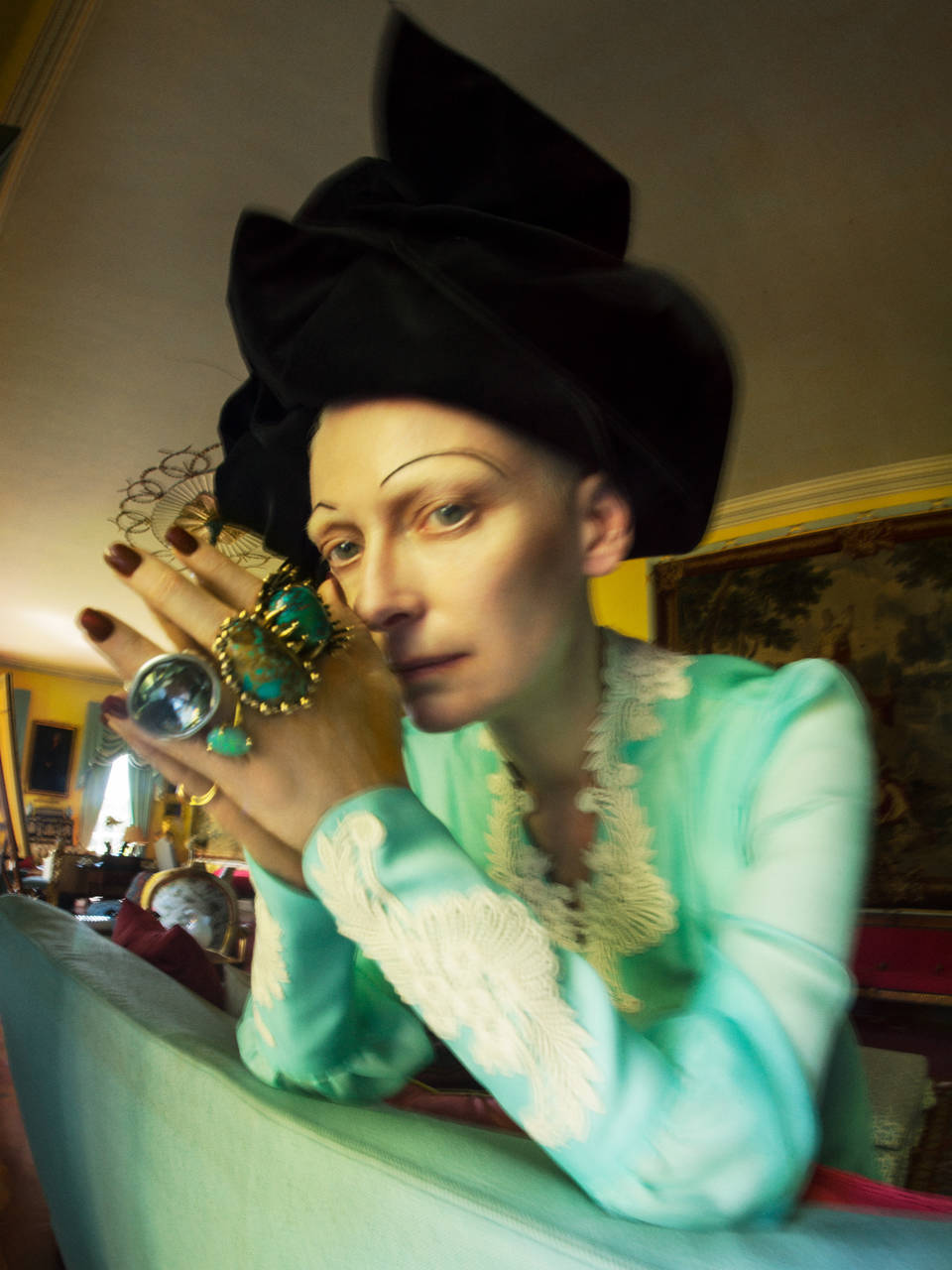
Tilda Swinton. Fashion: Gucci, Marc Jacobs, jewellery: Lisa Eisner Jewelry, Vela, Uno de 50, A. Brandt + Son. Renishaw Hall, Derbyshire, 2018. © Tim Walker Studio
An honourable mention from Tim Walker goes to everyone behind the scenes, “My photographs are only as good as the people I work with.” Putting the spotlight on the talent who make fantasy become reality on set, Walker addresses the importance of collaboration and teamwork. “They wouldn’t exist without someone’s love” – Walker refers to the objects he’d found during his V&A treasure hunt, and to those who preserved them. Walker sees “conservation as a gesture for the future”, as his work is a gesture to those who protect the past. Perhaps, Walker’s own vision is its own kind of conservation – a symbol of honouring former narratives and histories through their modern reimagination. “Without care, we have no memory of what art is.” Well, we very much care, and are encouraged to appreciate how the past informs the present, and how to keep the essence of authentic, fearless artistry for the generations to follow.
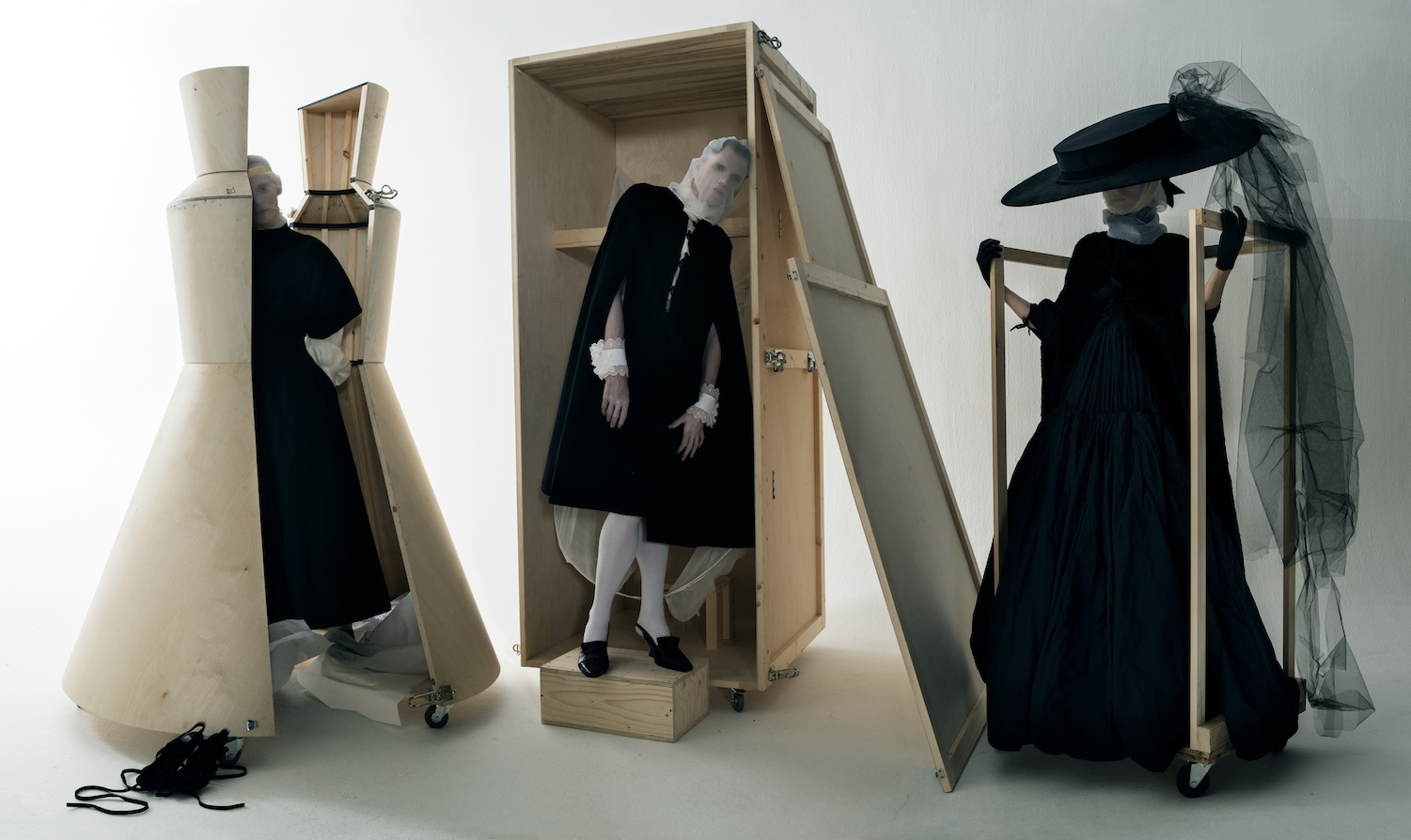
‘Karen Elson, Sgaire Wood & James Crewe’, London, 2018 (c)
On display at Kunsthal Rotterdam until January the 29th
Images courtesy of Tim Walker and Kunsthal
Words by Evita Shrestha
Notifications